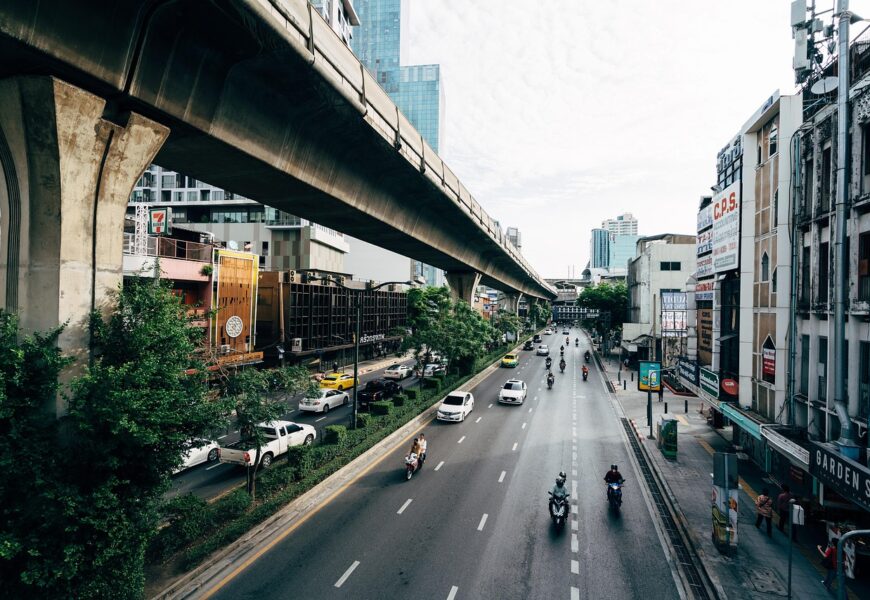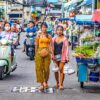Thailand, a vibrant Southeast Asian nation, boasts an incredible array of cities that showcase the country’s rich cultural heritage, modern development, and extraordinary diversity. From bustling metropolitan centers to historic cultural hubs, Thailand’s urban landscapes offer travelers and residents an unparalleled experience of tradition, innovation, and remarkable beauty. Each city presents a unique blend of ancient temples, contemporary architecture, world-renowned cuisine, and warm hospitality that makes Thailand one of the most compelling destinations in the world.
Bangkok: The Dynamic Capital City
Bangkok, Thailand’s sprawling capital, represents the epitome of urban complexity and cultural dynamism. Home to over 10 million residents, this megalopolis seamlessly blends centuries-old traditions with cutting-edge modernity. The city’s skyline features gleaming skyscrapers alongside ornate Buddhist temples, creating a visual tapestry that captures Thailand’s transformative spirit. Visitors can explore the Grand Palace, a stunning complex of royal buildings that showcase intricate Thai architectural design, or navigate the bustling streets filled with street food vendors, luxury shopping centers, and vibrant markets.
Transportation in Bangkok is an adventure itself, with options ranging from traditional tuk-tuks and river boats to sophisticated subway and sky train systems. The city’s economic significance cannot be overstated, serving as Thailand’s primary commercial and cultural hub. Its international airport connects Thailand to global destinations, making Bangkok a critical gateway for regional commerce and tourism.
Chiang Mai: Cultural Heart of Northern Thailand
Nestled in the mountainous region of northern Thailand, Chiang Mai offers a dramatically different urban experience compared to Bangkok. Known as the cultural capital, this city boasts over 300 temples, including the iconic Wat Phra That Doi Suthep, which sits majestically on a mountain overlooking the city. With a population of approximately 200,000, Chiang Mai provides a more relaxed atmosphere while maintaining significant historical and artistic significance. The city is renowned for its traditional handicrafts, particularly intricate silverwork, textiles, and woodcarving.
Chiang Mai’s culinary scene is equally impressive, featuring unique northern Thai dishes like khao soi, a coconut curry noodle soup that exemplifies the region’s distinctive flavor profile. The city also serves as a critical center for digital nomads and international expatriates, offering a high quality of life, affordable living costs, and a welcoming community atmosphere that attracts professionals from around the world.
Phuket: Tropical Urban Paradise
Phuket, Thailand’s largest island, represents a unique urban environment that combines coastal beauty with sophisticated infrastructure. As a major tourist destination, the city attracts millions of international visitors annually, drawn by its pristine beaches, luxurious resorts, and vibrant nightlife. The urban center offers a mix of modern amenities and traditional Thai culture, with historic Sino-Portuguese architecture in the old town reflecting the island’s rich multicultural heritage.
The city’s economy is predominantly tourism-driven, with world-class hospitality infrastructure that includes international airports, high-end hotels, and comprehensive transportation networks. Phuket Town, the island’s administrative center, showcases a fascinating blend of Thai, Chinese, and European influences, evident in its architecture, cuisine, and cultural festivals.
Ayutthaya: Historical Urban Treasure
Ayutthaya, once the capital of the Siamese Kingdom, represents a crucial historical urban center that offers profound insights into Thailand’s royal past. Designated as a UNESCO World Heritage Site, the city features extensive ruins of ancient temples, palaces, and monasteries that tell the story of a powerful medieval kingdom. Located just 80 kilometers north of Bangkok, Ayutthaya provides visitors with an extraordinary glimpse into Thailand’s architectural and cultural evolution.
The historical park spans approximately 289 hectares and contains numerous remarkable structures that demonstrate the sophisticated urban planning and architectural prowess of the Ayutthaya period. Visitors can explore magnificent temple complexes, examine intricate stone carvings, and understand the city’s historical significance as a major regional trading center.
Emerging Urban Centers
Beyond these prominent cities, Thailand continues to develop emerging urban centers like Chiang Rai, Krabi, and Nakhon Ratchasima, each offering unique cultural and economic experiences. These cities represent the country’s ongoing urban transformation, balancing traditional values with modern development strategies. They showcase Thailand’s commitment to sustainable urban growth, technological innovation, and preservation of cultural heritage.
These emerging cities are increasingly attracting international investment, developing sophisticated infrastructure, and creating opportunities for economic diversification. They represent the next generation of Thai urban environments, promising continued growth and development in the coming decades.
Thailand’s cities offer an extraordinary tapestry of experiences that reflect the nation’s complex history, cultural richness, and forward-looking spirit. From the bustling streets of Bangkok to the serene temples of Chiang Mai, each urban center tells a unique story of tradition, innovation, and human creativity. Travelers and residents alike can discover endless opportunities for exploration, understanding, and personal growth within these remarkable urban landscapes.









